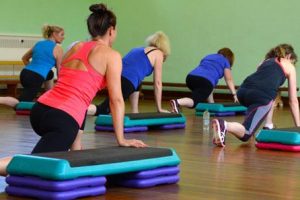Introduction
Proper form in strength training exercises is the cornerstone of a safe and effective workout routine. Among the most popular and effective exercises are bench presses and squats. Mastering the correct form for these two movements is crucial for maximizing gains and minimizing the risk of injury. In this comprehensive guide, we will delve deep into the techniques and principles of these exercises to ensure that you perform them with the utmost precision and safety.
Understanding Bench Presses
The Bench Press: A Foundation of Upper Body Strength
The bench press is a fundamental exercise for developing upper body strength, particularly the chest, shoulders, and triceps. However, it is essential to perform this exercise with the correct form to avoid potential injuries and to target the intended muscle groups effectively.
Proper Form for Bench Presses
To perform a bench press with proper form:
- Set Up: Lie flat on the bench with your eyes directly under the bar. Ensure that your feet are firmly planted on the ground, and your back, shoulders, and hips are in contact with the bench.
- Grip: Place your hands slightly wider than shoulder-width apart on the barbell. Your wrists should be straight, and your elbows should be tucked at around a 45-degree angle.
- Unrack: Lift the barbell off the rack, holding it with your arms fully extended. Keep the bar above your chest and maintain stability.
- Descent: Lower the barbell to your chest in a controlled manner. Your elbows should form a 90-degree angle at the bottom of the movement.
- Ascent: Push the barbell back up, extending your arms fully. Focus on a smooth and steady motion without bouncing the bar off your chest.
- Breathing: Inhale as you lower the bar and exhale as you press it back up. Maintain a tight core throughout the exercise.
Common Mistakes to Avoid in Bench Presses
- Arching the back excessively.
- Allowing the elbows to flare out.
- Bouncing the bar off the chest.
- Neglecting to use a spotter when lifting heavy weights.
Squats: The King of Lower Body Exercises
Squats are often referred to as the “king of exercises” because they work multiple muscle groups, including the quadriceps, hamstrings, glutes, and lower back. The proper execution of squats is essential not only for building leg strength but also for preventing injuries.
Proper Form for Squats
To perform squats with proper form:
- Position: Stand with your feet shoulder-width apart and your toes slightly turned out. The barbell should rest on your upper back, across the top of your shoulder blades.
- Descent: Lower your body by bending at the hips and knees. Keep your chest up, and your back straight.
- Depth: Aim to squat down until your thighs are parallel to the ground or below if flexibility allows. Avoid excessive forward lean.
- Ascent: Push through your heels to return to a standing position. Keep your back straight throughout the movement.
- Breathing: Inhale as you descend and exhale as you ascend. Maintain core stability and balance.
Common Mistakes to Avoid in Squats
- Allowing the knees to cave in.
- Leaning too far forward.
- Failing to maintain a neutral spine.
- Using too much weight without proper form.
Injury Prevention in Bench Presses and Squats
Understanding the correct form for bench presses and squats is only part of the equation. Injury prevention is equally vital. Here are some essential tips to reduce the risk of injuries during these exercises:
- Warm-up adequately before starting your workout.
- Use proper footwear and equipment.
- Progress gradually in terms of weight and intensity.
- Incorporate stretching and mobility exercises into your routine.
- Consider consulting with a fitness professional for guidance.
Conclusion
Incorporating bench presses and squats into your strength training regimen can yield significant benefits for muscle development and overall fitness. However, achieving those benefits depends on using the correct form. By following the guidelines provided in this comprehensive guide, you’ll not only maximize the effectiveness of these exercises but also reduce the risk of injury, ensuring a safe and productive workout experience.





Add Comment